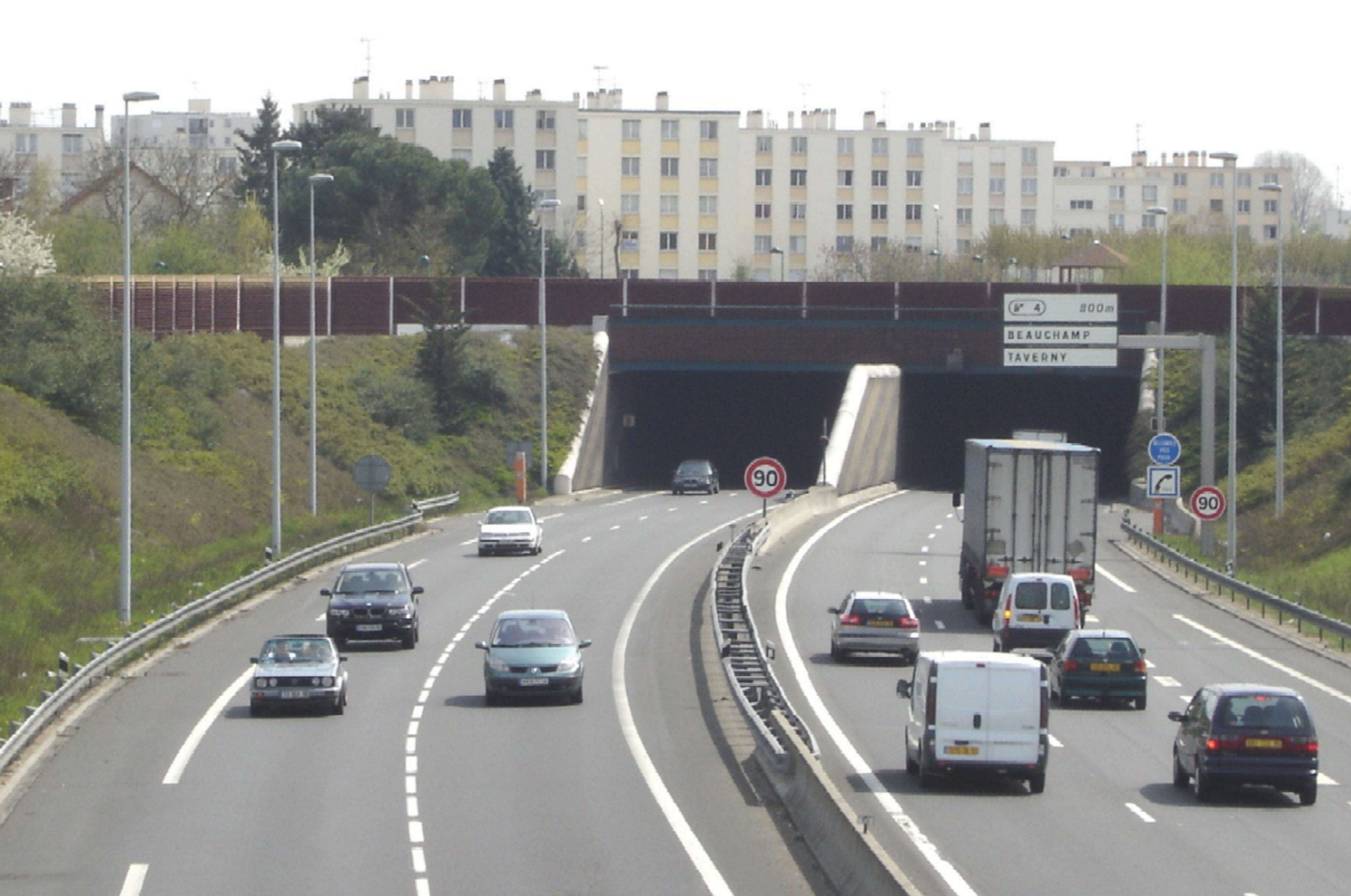
Road Tunnels Manual

Road Tunnels Manual
Noise is generally regarded as one of the key nuisances perceived by humans, which can significantly affect urban areas. It should therefore be taken into account in the design of tunnels, especially for those urban tunnels that have a high concentration of acoustical receptors in the immediate vicinity of portals and shafts.
Traffic-generated noise is not specific to tunnels. Underground infrastructures are generally regarded as having a positive influence on the acoustic environment, but there might be specific issues near the portals in some configurations. In most developed countries, noise impact studies are performed for every new infrastructure project (or significant modification), and the existence of tunnels is, of course, to be taken into consideration.
 The main source of noise impacting the environment surrounding tunnels is the traffic. Part of the noise from vehicles running inside tunnels is reflected by the tunnel lining and reaches the portal that itself becomes a source of noise. Under certain conditions the noise level near the portal of a tunnel can be higher than the noise level of a related open air section. However, this kind of effect is significant only for those acoustic receptors lying in the immediate vicinity of the tunnel portal. Moving away from the portal, noise levels rapidly diminish, since the noise coming from the tunnel is attenuated by the prevailing effect of noise generated by vehicles in the open air sections.
The main source of noise impacting the environment surrounding tunnels is the traffic. Part of the noise from vehicles running inside tunnels is reflected by the tunnel lining and reaches the portal that itself becomes a source of noise. Under certain conditions the noise level near the portal of a tunnel can be higher than the noise level of a related open air section. However, this kind of effect is significant only for those acoustic receptors lying in the immediate vicinity of the tunnel portal. Moving away from the portal, noise levels rapidly diminish, since the noise coming from the tunnel is attenuated by the prevailing effect of noise generated by vehicles in the open air sections.
There are also sources of noise that are associated with the tunnel infrastructure, the main one of which is the ventilation system. In the case of transverse ventilation, or longitudinal ventilation with extraction shafts, fans and air flow through inlets and outlets may generate significant noise, and in some cases they have to function even at night time when noise environmental standards are set at lower targets. One solution may be to reduce the use of the ventilation system by optimising its control, but this can only be achieved to a limited extent.
The most effective solution is to take these problems into account at the design stage. Considering that the most prominent noise effects are geographically limited, air inlets/outlets may be located as far away as possible from neighbouring buildings, but this may result in significant increases in cost. The air velocity should be kept at relatively low values at air inlets/outlets to reduce noise generation by making the size of these openings large enough. Additionally, silencers are most often necessary to prevent the noise generated by the fans from "leaking" out of the ventilation plant.
In the case of longitudinal ventilation, the noise impact from fans on the environment is generally moderate because, on the one hand, jet fans should not be located too close to the portals for maximum efficiency (consequently the noise of fans is "diluted" within the traffic noise), and on the other hand, silencers are usually fitted to the fans to maintain an acceptable noise level inside the tunnel. However, for particularly sensitive configurations, it might be necessary to select specific designs or operational measures.
Traffic-generated vibration is rarely a significant issue in the operation phase of a road tunnel (unlike rail tunnels, because trains generate much more vibration than road vehicles). Should such a problem occur, there is generally little that can be done apart from prohibiting access to the heaviest vehicles. Another source of vibration is the fans. These should be carefully balanced to avoid excessive vibration. However, fan vibration is generally not perceivable in the environment; it primarily affects the machine itself, and can compromise its longevity. It can also become a safety issue because jet fans, for example, may lose parts or even fall down from the tunnel ceiling due to excessive vibration. Vibration monitoring is crucial for the reliability and safety of jet fans.
Vibration is much more problematic during the construction phase, especially when explosives are used. Tunnel construction and related environmental measures are outside the scope of the PIARC committee on road tunnel operation; specific recommendations are published by the ITA.